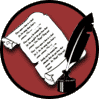%%USERNAME%% %%ACCWORDS%% %%ONOFF%% |
 | No ratings.
Neutron Retroreflectors can significantly increase the efficiency of a fusion reactor |
| Dr. Nathan Hammer had always been the guy who fixed things that weren’t broken yet. At the University of Eastern Midlands, the compact tokamak in Basement Lab 3 of the Rutherford Building was his obsession. Officially it was a teaching reactor: 0.8 m major radius, 200 kA plasma current, maximum 0.4 T on axis, good for a few megawatts of fusion power if you believed the grad students’ optimistic slides. In practice it made about 11 kW of neutrons on a good day and drank deuterium-tritium like a frat house drank cheap lager. Nathan didn’t like waste. One Thursday at 2 a.m., while the rest of the department slept off the annual plasma-physics conference hangover, he was elbow-deep in the vessel, installing what he called “a minor optical tweak.” The inner wall was already lined with carbon tiles and a few diagnostic mirrors. Nathan added thirty-two corner-cube retroreflectors, little aluminum nuggets the size of sugar cubes, each one a cluster of three mutually perpendicular mirrors. Surplus from an old lidar project. He epoxied them into recesses where the first-wall heat flux was low enough that they wouldn’t instantly fry. His logic was simple: most of the D-T fusion neutrons are born at 14.1 MeV and fly isotropically. About 0.3 % of them scatter back into the plasma after bouncing off the wall. That tiny return flux seeds a few extra reactions. Retroreflectors, in theory, could beam a fraction of the escaping 2.45 MeV neutrons from D-D side reactions straight back along their original paths instead of scattering randomly. It was the nuclear equivalent of shining a laser pointer at a cat toy and watching the dot chase itself. He expected maybe a 4–5 % bump in neutron yield. Enough for a nice little paper in Nuclear Fusion Letters, maybe a footnote in someone’s thesis. He ran the machine the next afternoon with the usual cautious shot parameters: 80 kA plasma current, 0.22 T toroidal field, neutral-beam injection dialed down to 0.9 MW because the aging power supply was throwing tantrums again. Fueling rate was only 2 × 10¹⁹ particles per second, about a quarter of what the machine was certified for. Nathan liked to creep up slowly; the cooling loop had a reputation for springing leaks when you surprised it. He pressed the big green button. The neutron detectors pegged instantly. Not the gentle rise he was used to, but a cliff. 2 × 10¹⁶ n/s became 9 × 10¹⁷ n/s in under 40 milliseconds. The real-time Qₚₑₐₖ display (fusion power out divided by external power in) shot past 6 and kept climbing. The control-room speakers howled with interlock alarms. Nathan killed the beams. The plasma collapsed with a sigh, leaving the scent of ozone and burnt coffee. For ten seconds nobody spoke. Then Emiliegh Ebersole, his postdoc, found her voice. “Nathan… that was 1.4 megawatts of fusion power. From 900 kilowatts injected. On a quarter fueling.” He stared at the log files scrolling past. The retroreflectors had turned the scrape-off layer into a hall of mirrors for fast neutrons. Every 14 MeV neutron that escaped now had a non-negligible chance of being kicked straight back into the core, where it could down-scatter and catalyze another hundred fusions before thermalizing. The effective neutron multiplication had jumped from ~1.003 to almost 1.28. In a tokamak the size of a minivan, that is the difference between a fancy water boiler and a star in a bottle. Nathan felt the blood drain from his face when he did the extrapolation in his head. If he had been running the standard fueling rate, 8 × 10¹⁹ particles/s, the fusion power would have hit roughly 90 megawatts. The first wall was rated for 0.8 MW/m² steady state, 2 MW/m² for short pulses. Ninety megawatts across the available surface area would have been 18 MW/m². The carbon tiles would have sublimated in seconds. The copper coils underneath would have turned into steam. The entire vessel would have become a very expensive molten sculpture. He looked at the little retroreflectors glinting innocently on the monitor, still warm from the shot. Emiliegh broke the silence again. “So… do we tell the safety office we accidentally invented a neutron multiplier that can melt the building if we sneeze at it?” Nathan rubbed the bridge of his nose. “We tell them we discovered an anomaly that requires further study at reduced parameters. Much reduced parameters.” He reached for the phone to call the department chair, then paused. Also,” he said quietly, “remind me to buy whoever designed those corner cubes a very expensive bottle of scotch. And maybe start writing the risk-assessment form titled ‘What if we accidentally turn the university into Hiroshima-lite because somebody wanted better neutron economy.’” The tokamak sat cooling in the dark, thirty-two tiny mirrors reflecting the overhead fluorescents like the eyes of something that had just woken up and realized how strong it was. Nathan decided the next shot would be at one-tenth the normal fuel rate. Just to be safe. |